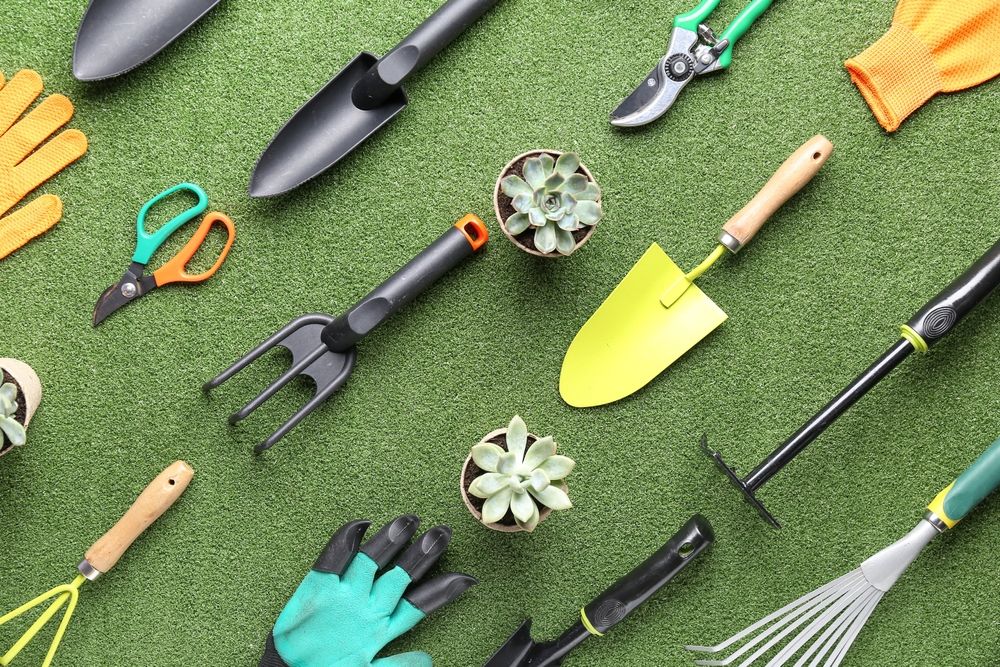A well-tended garden starts with the right tools. Whether you're growing vibrant flowers, fresh vegetables, or creating a peaceful backyard retreat, having reliable, high-quality garden tools makes every task easier and more enjoyable. The right equipment not only saves time and effort but also helps your plants thrive.
If you're starting from scratch or looking to upgrade your gardening kit, here’s a detailed guide to the essential garden tools that every home gardener should have.
1. Hand Trowel
A hand trowel is a must-have tool for any gardener, perfect for planting, transplanting, and digging small holes.
What to Look For:
-
A comfortable, ergonomic grip
-
Strong, rust-resistant metal blade (such as stainless steel)
-
A narrow, pointed tip for easy soil penetration
A good trowel is versatile enough to use in flower beds, pots, raised beds, and even tight spaces between established plants.
2. Pruning Shears (Secateurs)
Pruning shears are essential for trimming plants, cutting flowers, and maintaining healthy shrubs and trees.
Features to Consider:
-
Bypass shears (like scissors) for live stems
-
Anvil shears (like a knife on a flat surface) for dead wood
-
Sharp, durable blades for clean cuts
-
Comfortable handles with spring-loaded action
Regular pruning encourages healthier plants and better blooms or yields.
3. Garden Gloves
Protecting your hands is just as important as tending to your plants. A good pair of gloves shields you from thorns, splinters, and dirt.
Types of Gloves:
-
Lightweight gloves for delicate work like planting seeds
-
Heavy-duty gloves for dealing with thorns or rough landscaping
-
Waterproof gloves for working in wet conditions
Choose gloves that fit well and offer a balance between protection and dexterity.
4. Garden Fork
A garden fork is perfect for breaking up tough soil, turning compost, and aerating garden beds.
Key Features:
-
Strong tines made from steel or forged metal
-
A comfortable handle with a secure grip
-
Broad, flat tines for digging and heavy-duty work
Garden forks are especially useful in clay-heavy or compacted soils where a shovel alone might struggle.
5. Spade
A spade is one of the most versatile tools in any gardener’s arsenal. It’s used for digging, edging beds, moving soil, and transplanting.
What Makes a Great Spade:
-
A sharp, square blade
-
A sturdy shaft (wood, fiberglass, or steel)
-
A D-shaped or T-shaped handle for leverage
Investing in a quality spade pays off in easier digging and less strain on your back.
6. Hoe
A hoe is invaluable for weeding, shaping soil, and preparing seedbeds.
Types of Hoes:
-
Draw hoes for chopping and weeding
-
Stirrup (or oscillating) hoes for slicing weeds just below the surface
-
Dutch hoes for pushing and cutting weeds quickly
Selecting the right hoe depends on your soil type and the tasks you do most often.
7. Watering Can or Hose
Proper watering is critical to garden success, and the right tools make it easier to deliver water efficiently.
Watering Options:
-
Watering cans: Ideal for small gardens, pots, and delicate seedlings
-
Hoses: Great for larger gardens; choose one with adjustable nozzles
-
Soaker hoses or drip irrigation systems: Provide slow, deep watering for garden beds
Look for watering cans with detachable roses (spray heads) and hoses with kink resistance and durable fittings.
8. Rake
A rake keeps your garden tidy by gathering leaves, grass clippings, and other debris.
Two Main Types:
-
Leaf rakes: Lightweight with flexible tines for collecting leaves
-
Garden rakes: Heavy-duty with stiff tines for leveling soil, spreading mulch, or removing stones
Having one of each type ensures you’re ready for seasonal cleanup and soil preparation alike.
9. Wheelbarrow or Garden Cart
Moving soil, compost, plants, and tools around your garden is much easier with a sturdy wheelbarrow or garden cart.
Choosing the Right One:
-
Single-wheel designs for maneuverability in tight spaces
-
Dual-wheel designs for better stability on uneven ground
-
Durable, rust-resistant frames and strong tires
A well-made wheelbarrow or cart saves your back and lets you haul bigger loads with less effort.
10. Loppers
For branches too thick for pruning shears, loppers step in with long handles that provide extra cutting power.
Key Features:
-
Bypass blades for live wood
-
Anvil blades for dead, thicker branches
-
Lightweight yet strong construction
Loppers are a must if you have trees, large shrubs, or any kind of woody plants in your garden.
11. Soil Knife (Hori Hori)
A soil knife is a versatile tool perfect for digging, cutting roots, dividing plants, and even weeding.
Advantages:
-
Serrated edge for sawing through tough roots
-
Sharp point for precision digging
-
Measurement marks on the blade for planting depth
Many gardeners find that a hori hori quickly becomes their favorite all-in-one tool.
12. Garden Kneeler or Pad
Gardening often means spending a lot of time on your knees. A garden kneeler or padded knee pad can make the work more comfortable and protect your joints.
Options:
-
Foldable kneelers with built-in handles
-
Simple foam pads for lightweight convenience
Some kneelers even double as small benches for pruning or harvesting.
13. Garden Scissors
For delicate snipping tasks like deadheading flowers or harvesting herbs, garden scissors are a handy addition.
What to Look For:
-
Precision tips for fine cuts
-
Comfortable grips
-
Rust-resistant blades
Scissors help minimize damage to tender plants compared to larger pruning tools.
14. Tool Storage and Maintenance Items
Taking care of your tools ensures they stay in good working condition season after season.
Essentials for Tool Care:
-
Sharpening stone or tool sharpener
-
Wire brush for cleaning dirt and rust
-
Linseed oil for wooden handles
-
Storage shed, toolbox, or wall-mounted racks
Clean and dry tools after each use to prevent rust and deterioration.
Pro Tips for Building Your Garden Tool Kit
-
Start with the basics: You don’t need everything at once. Focus on the essentials first.
-
Invest in quality: Durable tools perform better and last longer than cheaper alternatives.
-
Match tools to your garden size: Smaller gardens may not require heavy-duty equipment.
-
Maintain your tools: Regular maintenance saves money and extends their lifespan.
-
Organize your storage: Keeping tools neatly stored makes gardening more efficient and enjoyable.
Building a thoughtful, quality collection of garden tools transforms gardening from a chore into a joy.





